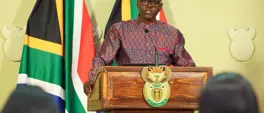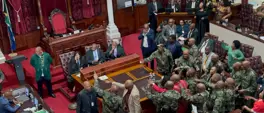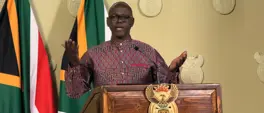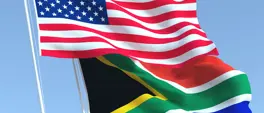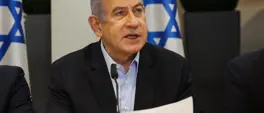Clock ticks on US tariff hikes as Trump broadens blitz
Vukile Dlwati
31 July 2025 | 3:42As the clock ticked down on a Friday deadline for higher levies to take effect on goods from various trading partners, Trump announced a trade deal with South Korea and separate duties on Brazilian and Indian imports.
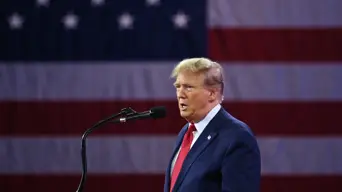
FILE: US President Donald Trump. Picture: AFP
WASHINGTON - Time is running short for governments to strike deals with Washington to avert tariff hikes that Donald Trump has vowed against dozens of economies -- and the US president continues to expand his trade wars.
As the clock ticked down on a Friday deadline for higher levies to take effect on goods from various trading partners, Trump announced a trade deal with South Korea and separate duties on Brazilian and Indian imports.
He also signed an order Wednesday to impose previously-threatened 50 percent tariffs on certain copper products and end a tariff exemption for low-value shipments from abroad.
The tariff hikes due Friday were initially announced in April as part of a package where Trump slapped a 10 percent levy on goods from almost all trading partners -- citing unfair trade practices.
This rate was set to rise to varying levels for dozens of economies like the European Union, Japan and others, but Washington twice postponed their implementation as financial markets gyrated.
So far, Britain, Vietnam, Japan, Indonesia, the Philippines, the EU and South Korea have reached initial deals with Washington to secure less punishing conditions.
While the United States and China earlier slapped escalating tariffs on each other's products, both sides are working to further a truce maintaining duties at lower levels.
'BIG DAY'
But Trump has been pushing ahead in his efforts to reshape global trade.
The US leader insisted Wednesday that the August 1 deadline "will not be extended" any further.
In a Truth Social post, he vowed that this would be "a big day for America."
Although Trump has promised a surge in government revenues from his duties, economists warn that higher tariffs can fuel an uptick in inflation and weigh on economic growth. This could change consumption patterns.
Already, consumers face an overall average effective tariff rate that is the highest since the 1930s, according to a recent analysis by The Budget Lab at Yale University.
The effect on consumer prices has been limited so far. But analysts cautioned this could become more pronounced as businesses run down on existing inventory and pass on more costs to buyers.
TARIFF BLITZ, DELAYS
Among Trump's latest announcements were a 25 percent duty on Indian goods to begin Friday -- slightly lower than previously threatened -- after talks between Washington and New Delhi failed to bring about a trade pact.
India would face an unspecified "penalty" over purchases of Russian weapons and energy as well, Trump said.
He also unveiled a 50 percent tariff on Brazilian goods, saying its government's policies and actions threaten US national security.
But he delayed its implementation from Friday to August 6 and crucially exempted many products from the prohibitive levy, including orange juice, civil aircraft, iron ore and some energy products.
Trump inked an order too for a 50 percent tariff to kick in Friday on goods like copper pipes and wiring, making good on an earlier vow to impose these duties.
But the levy, which came after a Commerce Department probe on national security grounds, was less sweeping than anticipated.
It left out products like copper ores, concentrates and cathodes, bringing some relief to industry.
Meanwhile, Seoul landed a deal with Trump in which South Korean products would face a 15 percent tariff when entering the United States -- significantly below a 25 percent level threatened.
Get the whole picture 💡
Take a look at the topic timeline for all related articles.






